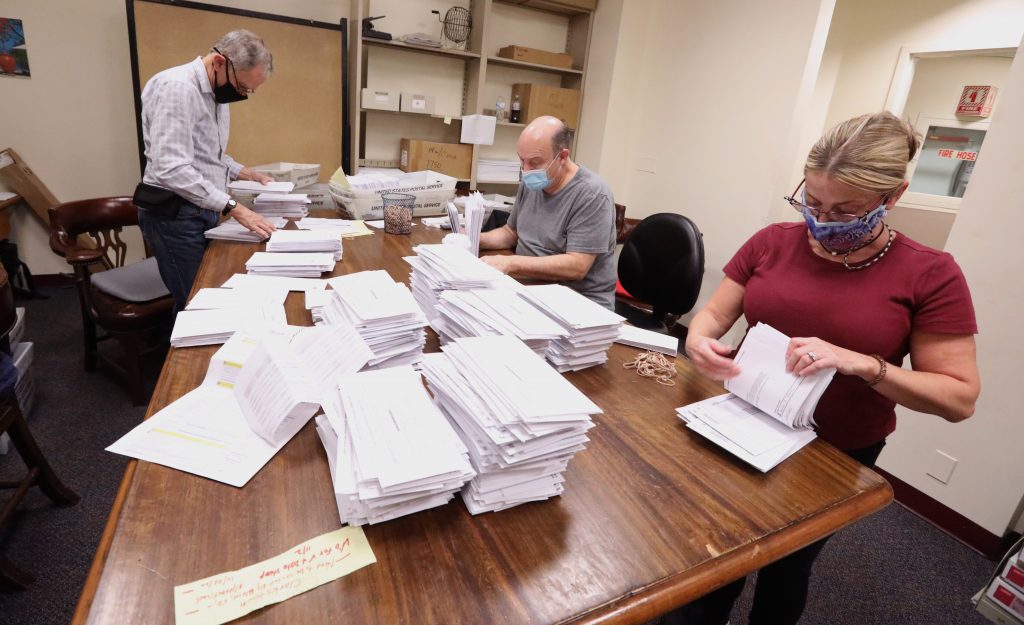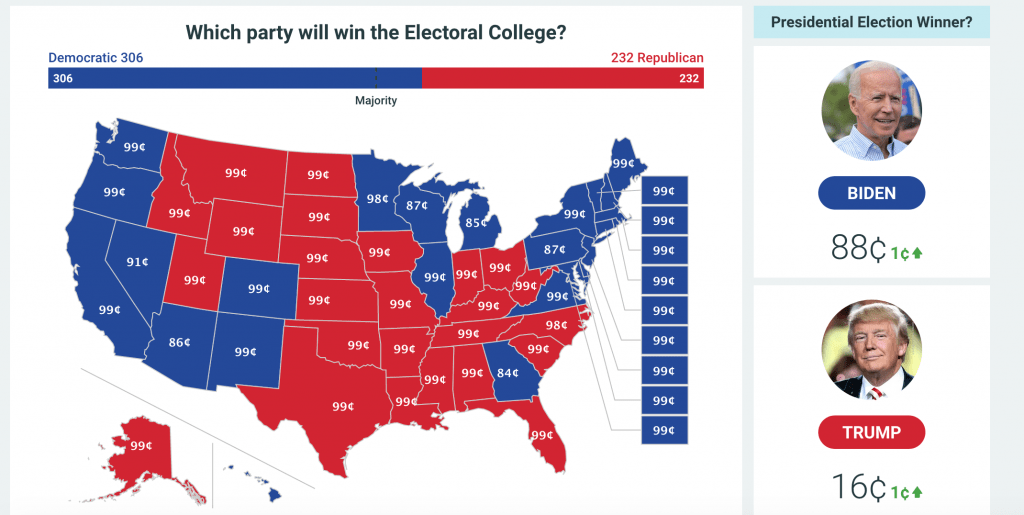Six Key Political Dates That Could Spark Volatility Before Inauguration
The next steps toward the Oval Office include certification of state election results by Dec. 8

During a normal presidential election year, the winner is unofficially announced on the evening of Nov. 3 and sworn into office on Jan. 20. But as everyone is well aware, 2020 has been anything but normal.
It’s for this reason that investors and traders will undoubtedly be following President-elect Joe Biden’s step-by-step ascension to the White House extremely closely in the coming weeks.
The reason for extra vigilance in 2020 is due to the many outstanding election lawsuits filed by the Trump campaign in an attempt to challenge the outcome. At this time, in the absence of any material evidence of election fraud, the lawsuits are not viewed as likely to derail Biden’s path to the Oval Office.
There is, of course, recent precedent in which the American judicial system was required to intervene to help resolve a presidential election. That was back in 2000, when the electoral difference between George W. Bush and Al Gore was a razor-thin 271-266. The focal point then was Florida’s electoral votes, which could have pushed either candidate over the edge, and where Bush held a minuscule edge of only 327 votes.
With such high stakes hanging by such a thin thread, it’s no surprise the Supreme Court was required to provide closure. But this year, the difference in electoral votes isn’t projected to be remotely close. President-elect Biden is expected to win the 2020 presidential election by a final electoral tally of 306 to 232.
That’s almost the same count that carried President Donald Trump to the White House in 2016 (304 to 227), and one that Trump himself has frequently referred to as a “landslide.” Moreover, in the key states where Biden holds an edge, it’s by thousands of votes, not hundreds.
That’s critical because when states have done recounts in the past, the number of impacted votes is almost always less than 1,000. In fact, FairVote estimates that on average, state recounts produce 282 votes that change direction. This figure highlights why a recount was so critical in 2000, and why recounts in multiple states this year almost certainly won’t change the outcome.
Given the size of Biden’s lead in key states, it’s doubtful recounts will even materialize, especially when one considers that the campaign seeking relief has to pay for the recount out-of-pocket (except when the margin is razor-thin, in which case the state pays).
Former Governor of Wisconsin and well-known ally of President Trump Scott Walker recently confirmed the futility of recounts in a tweet.
After recount in 2011 race for WI Supreme Court, there was a swing of 300 votes. After recount in 2016 Presidential race in WI, @realDonaldTrump numbers went up by 131.
As I said, 20,000 is a high hurdle. #Election2020 https://t.co/CEr82eiCWH
— Scott Walker (@ScottWalker) November 4, 2020
With litigation and recount prospects looking dim for the Trump campaign, all eyes now move to the next steps in the presidential election process, starting with the certification of statewide vote counts on or before Dec. 8.
Certified vote counts delineate the difference between “unofficial” and “official” election results, at least at the state level.
Listed below are the most important events and milestones expected to occur in the lead-up to Biden’s anticipated inauguration ceremony in Washington, D.C. on Jan. 20:
- Dec. 8: Known as the “Safe Harbor” deadline, this is the date by which states certify their votes and assign electors. During the 2000 presidential election, the Florida recount wouldn’t have been completed by the Safe Harbor date, and the Supreme Court intervened to stop it.
- Dec. 14: On this day electors meet in their respective states to cast their votes for president.
- Dec. 23: The deadline for state electoral votes to arrive at the Capitol in Washington, D.C.
- Jan. 3: The day that members of Congress are sworn in for the new term. The oath of office is taken at noon.
- Jan. 6: Members of the House and Senate meet in the House Chamber and count the submitted electoral votes. This process officially certifies the winner of the election at the federal level. If no candidate has achieved a total of at least 270 electoral votes, members of the House (not the Senate) decide the election.
- Jan. 20: The inauguration of the President of the United States. Since 1937, the inauguration day ceremony has been held on Jan. 20, with the president taking the oath of office at noon. If Congress has not certified a winner by noon on Jan. 20, then the Speaker of the House becomes president.
The President and his advisors are well aware of the above timeline because they walked the same line in 2016. Interestingly, the Trump campaign filed a lawsuit in Pennsylvania on Nov. 9 seeking to block the state from certifying its vote.
Election experts have indicated the suit has little chance of moving forward, explaining that the Pennsylvania legislature would actually have to change existing laws in the state for the suit to be successful. That’s unlikely to happen because the current governor of Pennsylvania, Tom Wolf, is a Democrat and would assuredly veto any such move.
It’s important to keep in mind that while the 2020 election could easily be characterized as “bitterly contested,” it certainly won’t go down as one of the closest in history.
Two previous presidential elections in the United States were so close that Congress was required to determine the winner. Likewise, there were 11 previous presidential elections determined by a thinner electoral margin than the 306-232 tally expected in 2020.
Current betting odds suggest Joe Biden has roughly a 90% chance of taking the oath of office on Jan. 20. That’s not to say there won’t be any drama in the interim.

Aside from the dates listed above, another critical date for investors and traders to circle on the calendar is Jan. 5, 2021. That’s the date of runoff elections in Georgia that will decide which party controls the U.S. Senate.
Currently, representation in the Senate is expected to be 50 Republicans and 48 Democrats, with just the two seats in Georgia left outstanding. But one has to keep in mind that in the event of a tie, the Vice President gets a vote.
That means that if the Democratic Party wins both Senate seats in Georgia on Jan. 5, Vice President-elect Kamala Harris will likely be extremely busy during the next couple years.
Taken together, the political theatrics still playing out across the country suggest market volatility will remain elevated in the coming months. That comes in stark contrast to the usual Santa Claus rally observed during the lead-up to Christmas, which is usually accompanied by a significant downdraft in volatility.
Yet another twist in an already outlandish year.
Sage Anderson is a pseudonym. The contributor has an extensive background in trading equity derivatives and managing volatility-based portfolios as a former prop trading firm employee. The contributor is not an employee of Luckbox, tastytrade or any affiliated companies. Readers can direct questions about any of the topics covered in this blog post, or any other trading-related subject, to support@luckboxmagazine.com.



















